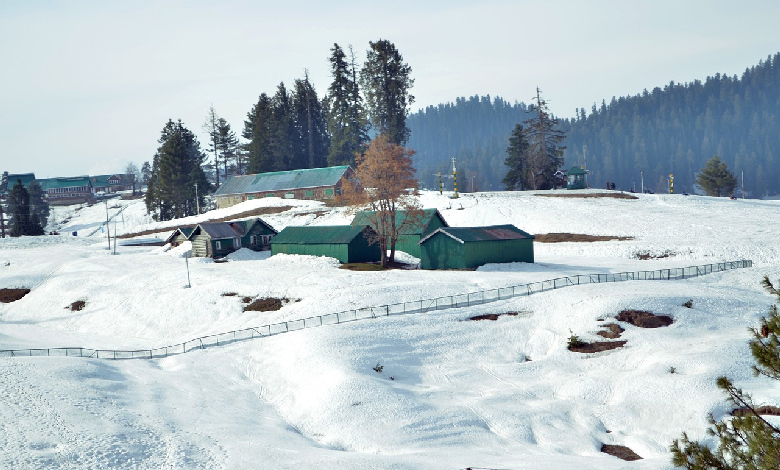Climate change: Is snowless Kashmir’s bare hillsides a barometer of changing atmosphere?

Situated at a staggering altitude of 8,694 feet, Gulmarg in the northernmost Indian union territory of Jammu & Kashmir is unable to open its famous ski slopes this year, disappointing scores of enthusiasts from India and abroad.
The meadow is a tourism favourite in all seasons. In January, the place is usually full of skiers enjoying training. But this year, Gulmarg is empty and silent. Chairlift and snow-beaters are not functioning. Patches of melting snow have replaced feets of accumulated powder.
See concerning sights of “no snow in Gulmarg, Pahalgam in January for the first time in recent public memory,” through the lens of The Kashmiriyat, a Kashmir-based independent news website and weekly newspaper. Experts fear it may lead to water reduction and a food crisis.
Safe skiing requires a minimum of 2 feet of snow
Gulmarg’s bare hillsides are now a barometer of changing global environmental patterns and their impact on the scenic Kashmir. Tauseef Rathore, training in-charge at the Indian Institute of Skiing and Mountaineering in Gulmarg, is upset.
Speaking to The Hindu, he said: “There are no ski training sessions in the main bowl this year so far. We are using slopes of Bota Pathri (about 7 km from the main bowl) for training as snow has not completely melted there in the shade of the tree line.”
Safe skiing requires a minimum of 2 feet of snow and the chairlift only functions if over two-and-a-half feet of snow has accumulated. Data from the Indian Meteorological Department shows Gulmarg recorded 17.6 mm of precipitation in December 2023, compared to 255.2 mm in 2020.
Skiers, especially those from Europe, flock to Gulmarg every year to enjoy its long runs of safe slopes. Gulmarg remains the only destination in Kashmir to offer the rare powder snow and scores of skiers train here for international events.
Global atmospheric circulation in focus
Mukhtar Ahmad, Director, IMD, Srinagar, told The Hindu: “Although there is no one-to-one relationship between deficit precipitation and El Nino, the changes in global atmospheric circulation and the persistence of the El Nino has resulted in less snow.”
Read More: Can evolution stop humans from resolving environmental problems?
Global atmospheric circulation refers to the large-scale movement of air that distributes thermal energy across the surface of the planet. This heat energy balance gets disturbed during El Nino and La Nino events, leading to some parts getting very high precipitation and others, dry spells.



